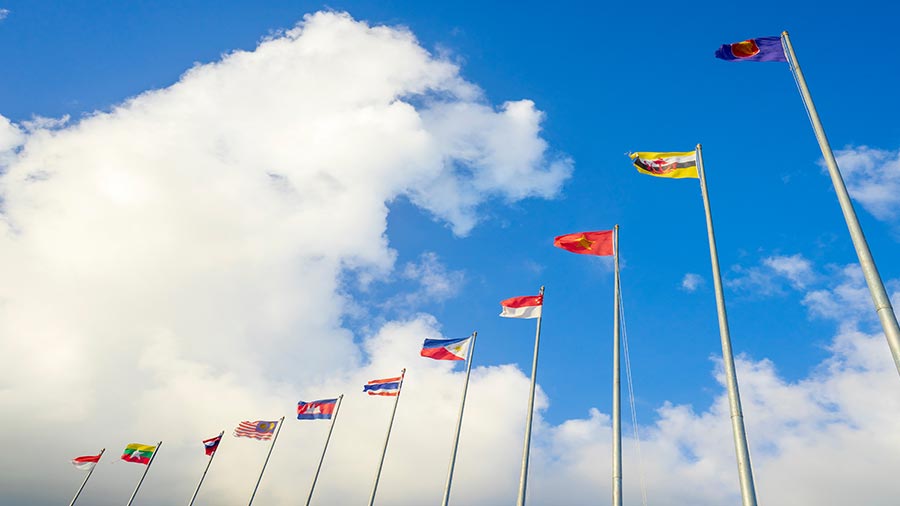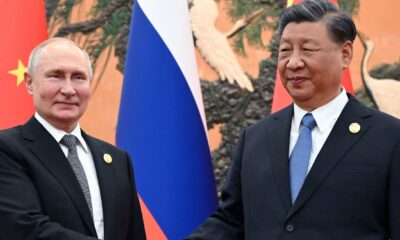China
Analyzing China’s Foreign Direct Investment (FDI) Performance in the First Half of 2024

China’s H1 2024 FDI data shows a decline in utilized FDI amount but an increase in the number of newly registered FIEs. Germany and Singapore increased investment, with a focus on high-tech manufacturing and professional services reflecting growing interest in China’s innovation-driven industries.
According to recent data from China’s Ministry of Commerce (MOFCOM), the country’s foreign direct investment (FDI) performance in H1 2024 presents a mixed picture. While the actual utilized FDI amount declined by 29.1 percent year-on-year to RMB 498.9 billion (equivalent to US$69.93 billion), the number of newly registered foreign-invested enterprises (FIEs) reached 26,870, reflecting a 14.2 percent increase year-on-year. Notably, investment from Germany and Singapore in China increased by 18.1 percent and 10.5 percent, respectively, during the January to June period, highlighting the strategic focus of these nations in the Chinese market.
In this article, we delve into China’s H1 2024 FDI data, examining the latest trends and challenges. We also explore strategic opportunities for foreign investors within the current economic landscape. As China prioritizes attracting investment in high-tech manufacturing, modern services, and green energy, understanding these dynamics is crucial for making informed decisions in this evolving market.
High-tech manufacturing, a key focus area for China’s economic strategy, also saw positive developments. FDI in this segment reached RMB 63.8 billion (US$8.94 billion), which constituted 12.8 percent of the total FDI for the period. This figure reflects a year-on-year increase of 2.4 percentage points, indicating growing foreign interest in China’s high-tech and innovation-driven industries. This growth aligns with China’s broader push towards advancing technological capabilities and fostering innovation as part of its economic transformation.
Particularly noteworthy are the substantial FDI inflows into specific segments such as medical instrument manufacturing and professional technical services. In the medical instrument sector, FDI surged by 87.5 percent, highlighting the increased foreign investment in healthcare technology and medical innovations. This growth reflects the sector’s expanding role in China’s healthcare system and its attractiveness to global investors seeking to capitalize on the country’s advancing medical infrastructure.
Similarly, the professional technical services sector saw a significant 43.4 percent increase in FDI, underscoring the rising demand for specialized services and expertise. This growth points to a broader trend of increased foreign engagement in sectors that support technological and professional advancements within China.
Between January and June 2024, investment from Germany and Singapore in China increased by 18.1 percent and 10.5 percent, respectively. This growth highlights a rising interest from these nations even as overall FDI experienced a broader decline.
This article is republished from China Briefing. Read the rest of the original article.
China Briefing is written and produced by Dezan Shira & Associates. The practice assists foreign investors into China and has done since 1992 through offices in Beijing, Tianjin, Dalian, Qingdao, Shanghai, Hangzhou, Ningbo, Suzhou, Guangzhou, Dongguan, Zhongshan, Shenzhen, and Hong Kong. Please contact the firm for assistance in China at china@dezshira.com.
China
Geopolitical chess game: Why India has no interest in serving as a western pawn

Canada’s accusation against India over a citizen’s murder highlights the West’s empty rhetoric on democracy, as India maneuvers strategically, prioritizing its interests over Western expectations amid rising regional tensions with China.
Canada’s deepening divide with India following its accusation that the Indian government was responsible for the murder of Canadian citizen Hardeep Singh Nijjar has revealed a cynical truth: the West’s interest in democracy and rules-based international order is largely empty rhetoric.
Canada’s western allies have offered some support in its confrontation with India. However, this support is extremely limited. India is too important to American efforts to contain China.
India understands this and is taking full advantage of its position in this ongoing geopolitical chess game by getting what it can from the West while keeping a clear focus on its own interests.
India is a regional rival of China. It may have passed China as the world’s most populous country and is, by purchasing power parity, the world’s third largest economy.
The United States is trying to redirect global resources and supply chains from China to India. Supposedly, India is “safe” because it shares “democratic values” with the West.
Modi regime
However, India’s so-called liberal democracy has been severely damaged by the Hindu-supremacist policies of the Narendra Modi regime.
In modern India, religious minorities, especially Muslims, are regularly victims of mob violence, including lynching and sexual assault.
A rabid nationalist media pumps up government policies. Critical journalists are brutalized and silenced. The judiciary and parliament have been cowed.
Indian author Arundhati Roy argues that India is well on its way to becoming a fully fascist state. Roy was recently charged by the Modi regime for supposedly “provocative” statements she made in 2010.
A journalist pins a small Free the Press placard on the dress of writer and activist Arundhati Roy during a protest at the Press Club of India in New Delhi on Oct. 4, 2023. Police arrested her a few days later for comments she made in 2010.
(AP Photo/Altaf Qadri)
The western world knows all of this, but its actions towards India aren’t motivated by “shared values.” The West, led by the U.S., is driven only by the desire to contain China.
India has rejected Canada’s accusations, but has also flagged western hypocrisy. Indian MP Shashi Tharoor has alleged the U.S. and Israel are the “two foremost practitioners of extra-territorial assassinations in the past 25 years.” American drone warfare has killed thousands of people the U.S. accuses of terrorism and thousands of innocent bystanders in the Global South.
India may be following the West’s lead, but on a much smaller scale. Also, it allegedly acted in a western state, which seemingly expect to be exempt from the kind of violence they have unleashed on the Global South.
Read more:
India’s accusation of ‘terrorism’ is a ploy to hide its own human rights abuses
Not an American pawn
India is happy to accept western economic, military and technological support to help it close its enormous gaps in wealth, infrastructure and overall development with China. The West, meantime, needs India to maintain its global domination.
But India has no more interest in perpetuating western dominance of the global system than China does. It is not an American pawn.
India is pursuing its own interests, as its continuing relationship with Russia indicates.
Russian President Vladimir Putin and Indian Prime Minister Narendra Modi pose for a photo prior to their talks at the Shanghai Cooperation Organisation summit in Uzbekistan in September 2022.
(Alexandr Demyanchuk, Sputnik, Kremlin Pool Photo via AP)
India and China have a major border dispute and are militarily at odds. They view each other with mutual suspicion and, often, contempt.
But they understand that they will be neighbours forever and their relationship can be mutually beneficial if they can find diplomatic resolutions to their conflicts. This may be easier said than done, but the two countries have improved relations in the past and enjoy a growing economic relationship today.
Most Indians accept that making an active enemy of China is not in India’s best interests.
The more aggressive the U.S. becomes towards China, the more leverage it gives to India to use against both the Americans and the Chinese. India can extract benefits from the U.S.; simultaneously, American aggression provides China with incentives to improve its relations with India.
Choosing a side
But there is a point — perhaps fast approaching — at which regional states will feel forced to make a choice between China or the U.S. There’s a limit to how far both sides can be played off against the other.
Tensions between India and China benefit U.S. interests. If India and China resolve their differences and choose to work together — or, at least, not to work against each other — it would complicate those interests. As unlikely as this may seem now, harmonious relations between China and India are a real long-term possibility.
India is far from posing a threat to American power the way China is now. Nonetheless, if the U.S. succeeds in elevating India at China’s expense, it will eventually have to contend with challenges from India. It’s already clear that India doesn’t see itself as a western subordinate and has its own regional aspirations.
U.S. President Joe Biden speaks with India’s Prime Minister Narendra Modi at the White House in June 2023.
(AP Photo/Evan Vucci)
India’s alleged murder of a Canadian citizen may be a taste of how India will handle its relations with the West as it rises in power. India will be demanding privileges the West extends to itself and its allies, for whom “rules-based international order” is a meaningless facade.
Canada has asked India to co-operate in its investigation of Nijjar’s murder. The investigation will probably go nowhere and be quietly buried. There are suspicions that India may be threatening other Sikh activists and may have committed another murder in the U.K.
India has recently eased some visa restrictions on Canadians even as it has expelled 41 Canadian diplomats, threatening to revoke their diplomatic immunity.
India will walk away untouched from its spat with Canada. It is too important to western strategies against China. But India has its own game to play and that does not necessarily accord with what the West wants.
This article is republished from The Conversation under a Creative Commons license. Read the original article.
China
Bilateral Relations Between China and Norway: An Overview of Trade and Investment

China and Norway’s economic relationship has strengthened, marked by increased trade, investment, and a new visa-free policy. After years of tension, high-level meetings in 2023 signaled renewed collaboration, particularly in sustainable practices, technology, and trade between the two nations.
The economic relationship between China and Norway economic relationship has evolved into a strong cooperation, highlighted by increased trade and investment, and a new visa-free policy.
China and Norway have developed a dynamic and evolving economic partnership over the years, marked by mutual interests in trade, investment, and technological cooperation. While their diplomatic relationship dates back to the mid-20th century, recent developments have significantly shaped their bilateral ties. Norway, with its expertise in sustainable practices and green technologies, and China, with its growing investments in these areas, have increasingly aligned their economic interests.
In recent years, the relationship between China and Norway has transformed from a period of diplomatic tension to one of renewed collaboration and growth. The reestablishment of high-level meetings and the introduction of a visa-free policy for Norwegian citizens in 2024 reflect the deepening of their ties.
Diplomatic relations between the People’s Republic of China and Norway officially began on October 7, 1950, with diplomatic missions established on October 5, 1954. However, the history of Norwegian diplomatic presence in China dates back to the mid-19th century, during the union of Sweden and Norway, with the first Norwegian mission established in Guangzhou in 1851. Norway continued to maintain diplomatic posts, with its first official mission as an independent country being set up after its separation from Sweden in 1905.
In the 21st century, the relationship has evolved significantly, moving beyond cultural and political exchanges to focus on economic cooperation, particularly in sectors like industry, technology, and trade. By 2009, the volume of bilateral trade had steadily grown, with Norway exporting equipment, chemicals, and seafood such as salmon to China, and China exporting ships, textiles, and electronic products to Norway.
However, diplomatic ties faced a significant setback in 2010, following the awarding of the Nobel Peace Prize to Chinese activist Liu Xiaobo. This led to China suspending high-level bilateral meetings, canceling planned exchanges, and imposing informal restrictions on Norwegian imports, particularly salmon. Diplomatic relations remained frozen for several years, affecting various industries and political dialogues between the two countries.
Normalization of relations was eventually achieved in 2016, marking a turning point that led to improved cooperation in subsequent years. This was followed by a gradual resumption of trade talks and increased bilateral exchanges. In 2023, diplomatic ties saw further strengthening with high-level meetings between Chinese and Norwegian officials, signaling a renewed focus on enhancing economic collaboration. Additionally, a new visa policy was introduced, allowing Norwegian citizens longer stays in China without the need for a visa, underscoring the improving trade and investment relationship.
| This article was first published by China Briefing , which is produced by Dezan Shira & Associates. The firm assists foreign investors throughout Asia from offices across the world, including in in China, Hong Kong, Vietnam, Singapore, and India . Readers may write to info@dezshira.com for more support. |
Read the rest of the original article.
Business
PwC Faces $62 Million Fine and Six-Month Ban in China – Financial Times

PwC was fined $62 million and suspended for six months in China due to violations in their auditing practices, highlighting significant regulatory scrutiny in the region.
PwC Faces Major Penalties in China
PricewaterhouseCoopers (PwC) has been penalized with a $62 million fine and a six-month ban from operations in China. This decision follows findings of inadequate internal controls and a failure to comply with regulatory standards during their auditing practices. Such measures reflect the government’s commitment to maintain high integrity within the financial sector.
Implications of the Ban
The ban, which prevents PwC from conducting business activities in China, poses considerable implications for the firm. As one of the leading auditing companies, this suspension significantly affects their client relationships and revenue streams in the region. This incident illustrates the increasing scrutiny regulators are placing on global firms operating in China.
The Importance of Compliance
This case serves as a crucial reminder of the importance of compliance for all companies, especially in regulatory environments. The audit failures not only harm the firm’s reputation but also spotlight the necessity for rigorous internal controls. PwC and other firms must take decisive actions to bolster their compliance frameworks to avoid similar repercussions in the future.
Source : PwC fined $62mn and banned for 6 months in China – Financial Times











